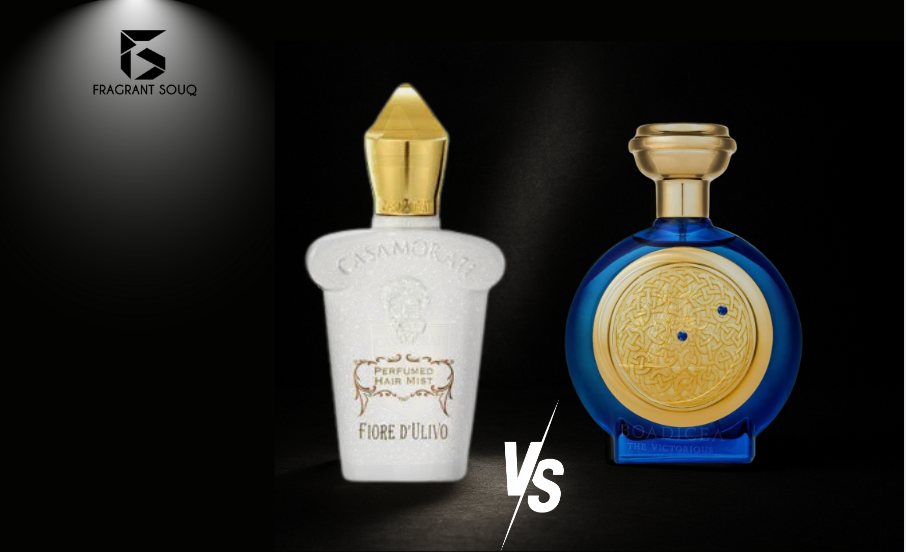Arabian Perfumes vs. Western Perfumes: A Journey of Scent and Soul – Have you ever walked past someone and been transported by a whisper of delicate florals, or been enveloped by a warm, captivating aura that tells a story of ancient traditions? The world of fragrance is vast, but it largely orbits two distinct suns: the bold, opulent universe of Arabian perfumes and the bright, evolving galaxy of Western perfumes.
While both aim to delight the senses, their philosophies, ingredients, and very presence on the skin are worlds apart. Understanding these differences isn’t about declaring a winner; it’s about finding the key to your own personal scent identity. Let’s unravel the mysteries.
The Heart of the Matter: Key Differences at a Glance
| Feature | Arabian Perfumes | Western Perfumes |
| Scent Profile | Warm, spicy, woody, balsamic. Often centered around Oud, Amber, Musk, and Roses. | Fresh, floral, citrusy, aquatic. Often linear or evolving in a “pyramid” (top, middle, base notes). |
| Key Ingredients | Natural extracts like Oud (Agarwood), Taif Rose, Frankincense, Sandalwood. | A blend of natural essences and synthetic molecules (e.g., iso E super, ambroxan). |
| Intensity & Longevity | Very high. Oils and concentrated blends last for many hours, even days on fabric. | Varies (Eau de Toilette vs. Eau de Parfum), but generally lighter and more transient. |
| Philosophy & Occasion | An art form for personal enjoyment and generosity (sharing scent). Often unisex. | Fashion accessory, mood enhancer, and personal signature. Often gendered. |
| Presentation | Ornate, decorative bottles that are often works of art. | Minimalist, chic, and brand-focused design. |
Diving Deeper: The Stories Behind the Scents – Arabian Perfumes vs. Western Perfumes
- Western Perfumery: Rooted largely in France and Italy, Western perfumery is often viewed as an accessory, an extension of fashion and personal style. It’s about making a first impression, enhancing a mood, or capturing a memory—like a fresh sea breeze or a walk through a spring garden. The focus is on creativity, trend, and evoking a specific, often fleeting, emotion.
- Arabian Perfumery: With a history stretching back millennia along the Silk Road, scent in the Arab world is deeply woven into the fabric of culture and religion. It’s considered a form of art, generosity, and personal grooming. Perfumes are not just worn; they are experienced. The tradition of burning Bakhoor (incense) to fragrance homes and clothes before wearing perfume is a ritual in itself. The scent is meant to be a lingering, intimate part of one’s presence.
2. The Ingredients: Nature’s Bounty vs. Scientific Artistry
This is where the difference is most profound.
- Arabian Scents are famous for their use of rich, natural resinous materials. The star is undoubtedly Oud (or Oudh), a dark, complex resin derived from the infected agarwood tree. It’s smoky, leathery, and incredibly potent—often called “liquid gold.” Alongside Oud, you find precious ingredients like deep, honeyed Amber, animalic Musk, and the exquisite Taif Rose. These are base notes with immense staying power.
- Western Scents often build a narrative using a wider palette that includes synthetic molecules. This isn’t a negative; it allows for the creation of abstract concepts like “ozonic” (the smell of rain) or “gourmand” (edible scents like vanilla or caramel). While high-end Western perfumes use natural oils, the reliance on synthetics makes complex scents more accessible and consistent.
3. The Sillage & Longevity: A Whisper vs. an Embrace
Western Perfumes: Typically designed for a moderate “sillage” (the scent trail you leave behind). An Eau de Toilette might last 3-4 hours, while an Eau de Parfum can last 6-8. They are often meant to be discovered upon closer interaction.
Arabian Perfumes: Often sold as perfume oils or concentrated sprays (like Attar), they are powerhouses of longevity. A single drop can last all day and even linger on clothes for days. Their sillage is significant—they announce your presence in a room before you do and leave a memorable trace long after you’ve gone.
Which One Is For You?
Choose an Arabian Perfume if…
- You love warm, spicy, and deep scents.
- You value longevity and want a scent that lasts from day to night.
- You appreciate tradition, artistry, and unisex fragrances.
- You want to make a bold, confident statement.
Choose a Western Perfume if…
- You prefer fresh, light, and airy fragrances.
- You like to change your scent based on your mood, season, or occasion.
- You enjoy the evolving nature of top, middle, and base notes.
- You prefer a subtle, close-to-the-skin scent or a classic, gendered fragrance.
The Final Note Arabian Perfumes vs Western Perfumes: A World of Fusion
So, Xerjoff or Boadicea ? The choice lies in your personal definition of luxurToday, the lines are beautifully blurring. Many Western luxury houses are now incorporating Oud and Amber into their collections, creating “Oriental” or “Woody” lines. Conversely, modern Arabian brands are crafting lighter, more contemporary interpretations of classic scents for a global audience.
The best way to choose? Follow your nose. Sample without prejudice. Let a Western floral lift your spirits on a bright morning, and allow a rich Arabian Oud to ground you on a cool evening. In the end, the perfect perfume is the one that feels like you.
What’s your signature scent style? Are you Team Oud or Team Citrus? Share your thoughts in the comments below!
- Read more here – Click



